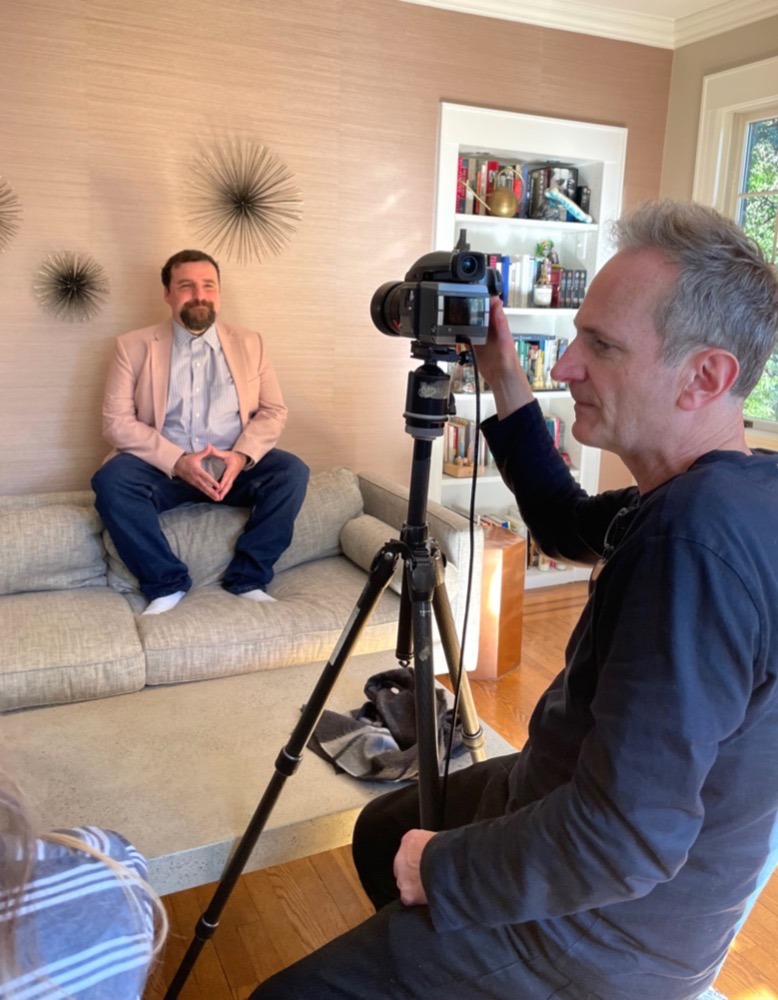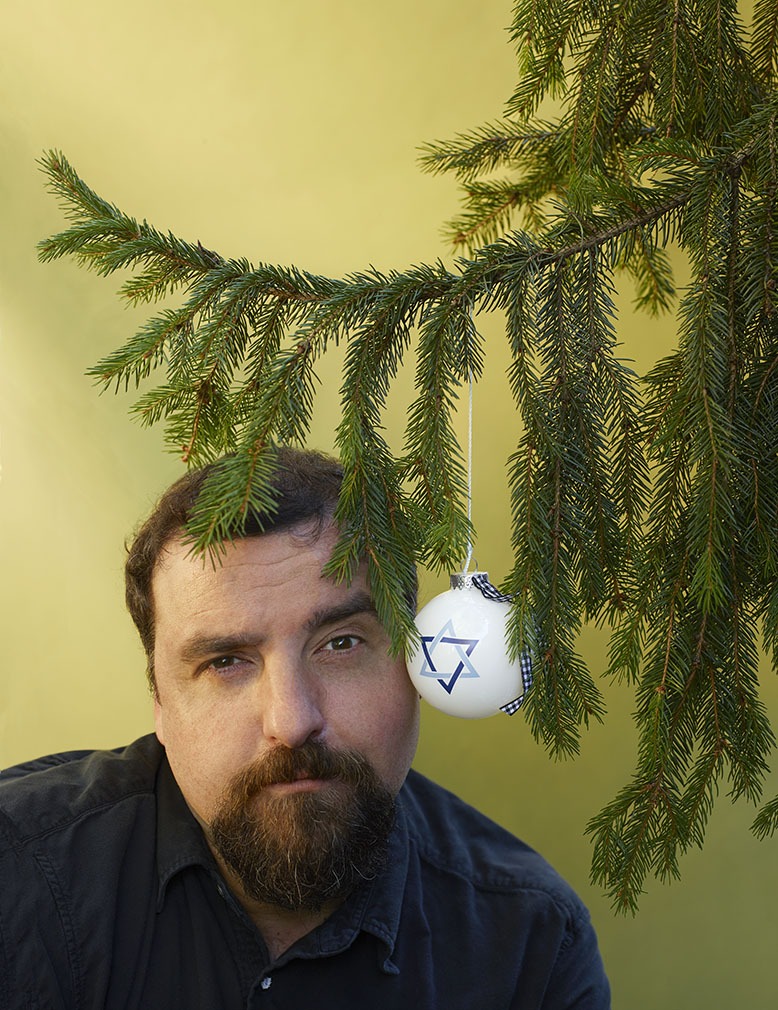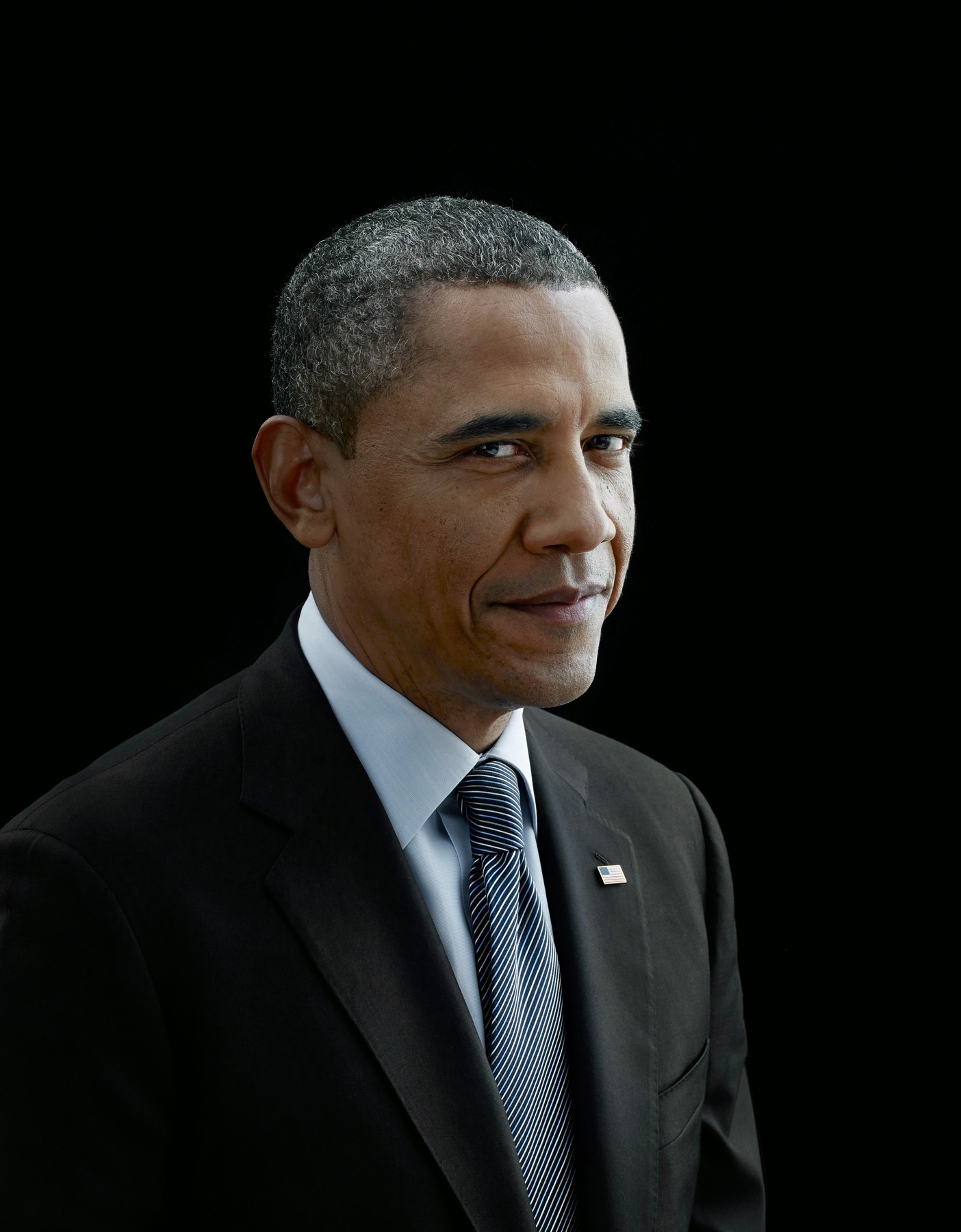
Photographer Chris Buck gears up to take portraits of David Krumholtz during an NJM shoot in Ridgewood. Photo courtesy of Gail Ghezzi
Editorial photographer Chris Buck has long been known for his compelling, eccentric portraits, often of celebrities.
The Toronto native, 58, theorizes that his fascination with famous subjects stems from childhood. “I think I’m trying to work through my own troubles from my youth of maybe not being accepted or not being invited into the popular crowd of boys in middle school,” he muses.
Buck recently captured a portrait of Wykoff resident David Krumholtz to accompany a New Jersey Monthly story about the actor’s experience inhabiting a poignant role on Broadway.
Buck, who moved to Montclair five years ago from Manhattan, spoke with us about the psychology behind portraiture, why he doesn’t play music on set and what he admires about the Garden State.
You recently photographed David Krumholtz for New Jersey Monthly. What did you want to bring to his portrait?
It was great to learn more about David. I knew so many of his roles—he’s like a Zelig character, who seems to have been in so many important movies, and in different genres and eras. When you look up his clips, it’s kind of insane where he pops up and who he’s brushed shoulders with.
In meeting him, he tells great stories about it, because he seems to see himself as a bit of a journeyman actor who does lots of different things and is open to different kinds of roles. So he ends up kind of moving into these different worlds, but as a regular person. It feels very welcoming to be with him. He’s obviously a talent and has fantastic achievements—and yet he also has a real modesty and humanity about him that made it really a delight to work with him.
In making his portrait, we kind of made the picture about his two big projects that are happening right now. One is the Santa Clause movie series, in which he plays the head elf. And then he’s also in this Broadway play, Leopoldstadt, which is about Jewish people in Vienna in the early 20th century. And we tried to encapsulate that in one picture, by having a Star of David on a Christmas ornament. It was a fun way to combine the two themes. He’s sort of more associated with that elf role than anything else in his career—which is fascinating, because he is Jewish by heritage himself. So it was fun to kind of break that down and put it into the image.

Buck’s portrait of Krumholtz for NJM captured the actor’s two major projects this year. Photo by Chris Buck
Is there an added intimidation factor when you’re taking photos of high-profile people? And, if so, has it evolved throughout your career?
Well, yes. And certainly the intimidation factor of a famous person or a powerful person is also their appeal, so it’s sort of a double-edged thing: You’re there because it’s high stakes. That’s what makes it great—but it also makes it scarier. There’s more preparation involved; you build in more safety nets so that if it doesn’t go well, you have something to fall back on. Having a good background and good lighting—that’s your safety net, having the technical stuff in place. So if the person shows up and does nothing, the photo may not feel very connected, but at least it’ll look cool. But if you can get a gesture or expression that feels more connected or more spontaneous, then the audience is going to be more engaged, and it’ll be more exciting and feel more unique.
But I’d say for the first 15 years of my career, every shoot with anyone prominent was absolutely, totally terrifying and anxiety-causing. I still prepare and get scared and nervous before important shoots, but that total freaking-out quality is very unusual now, just because of my level of exposure to these situations.
After I photographed President Obama in the White House, everything felt a little easy, you know? That was definitely a high-stakes situation where I expected to get really very minimal results, but I got a great photo that feels really of-the-moment, authentic, and still feels very much in my style. A lot of times—and I don’t mean this as a criticism—but you’ll see great photographers go and photograph a sitting president, and it will be much more about the subject. And it will sort of feel like an outlier from their body of work—here’s this portrait and that portrait, and then there’s the one of the president. And the portrait of the president feels fine, but like it’s more about the subject than about the photographer. I think my Obama picture feels like it’s evenly me and him, and that’s really hard to get.

“I think my Obama picture feels like it’s evenly me and him,” Buck says. Photo by Chris Buck
Were you always conscious of that desire to put yourself into the portraits?
In my very early days of making portraits, I was initially trying to do a picture that the subjects would like and that I would like, and then kind of find where the overlap was. At some point I realized: I can’t read their mind, and they can’t even really articulate what they want. They want me to do my thing, but in a way that’s gonna make them look good. But they can’t articulate what that is.
I mean, obviously everyone wants to look cool and young and thin—but those things aren’t that interesting, especially to me. I like people not looking cool. Young or old is equally interesting to me. If anything, I prefer people looking older; people who look like they’ve had experience and a life of adventure. I don’t want pictures to be unflattering, because if anything that’s just as distracting as flattering. Flattering is boring, but unflattering is just distracting. I want the portrait to be interesting in a way that brings in some of their personality, and some life.
But what I realized in those early days is: If I make the picture about me, and about what I’m feeling, and essentially make those portraits self-portraits, then I will likely come upon something interesting. It was kind of an invitation for me to go all in: If I make it about how I feel, then I have at least a chance of making it feel authentic, and that the audience will connect to it.
What motivates you, at a very basic level, to do this work?
Oh, wow, if only I knew! I don’t really know. I remember being in school—kind of an “understanding media” type of class—and there was this very perceptive teacher. And he was like, Why do you want to photograph celebrities? And I kind of made a joke about having some deep-seated psychological issues that I was trying to work through. That was the best answer I could think of. [Laughs.] It’s still kind of true.
I mean, I think maybe now that I’m older and more secure and such, I’m interested in people and their stories—but, say, with the celebrities: I think I’m trying to work through my own troubles from my youth of maybe not being accepted or not being invited into the popular crowd of boys in middle school. By photographing celebrities who are kind of the cultural version of the popular crowd, I’m trying to kind of figure that out and parse it and maybe, I don’t know, send them a message? I don’t really quite understand it; I think it’s something related to that.
I do think that there’s an aspect of not knowing that is valuable. And the fact that I’m still trying to figure it out—that journey is key to making good work.
Are you known for any eccentric creative routines or on-set must-haves?
It’s funny—your own practices seem so ordinary or reasonable. I only know what’s different based on what my photo assistants tell me.
I don’t generally play music on set. I had a set of shoots recently for New York magazine, and more than one subject literally, like, set up their phone to play music while we were shooting because it made them uncomfortable that I wasn’t.
And I do that for a few reasons. One, my voice is kind of a little quiet and hard to hear, so people can’t hear me if I’m playing music. Two, I kind of like people being a little uncomfortable. It’s funny, ’cause photographers often talk about, you know, how I get my subject comfortable; how I create an environment that feels relaxed. And I don’t want it to be unrelaxed, but my goal is to get people in a position where they’ll do what I want them to do. The process is sort of complex—and I guess, on some level, manipulative—but it’s also transparently manipulative.
I thought of this a couple years ago: That having your portrait made is like going to see a psychologist. If you could do it on your own, you would. If you could figure out your anxieties or problems by just sitting and looking out the window, then you wouldn’t go see someone and spend all that money and time and vulnerability. You would just kind of think about it and then act on the results you think of, you know? But I think there’s a reason why people’s selfies tend to be pretty terrible. I mean, they’re fine, but they’re very limited in scope. Whereas a real portrait can have real nuance and insight. And I think that’s what I’m trying to do when I do a sitting with someone.
Do you have any favorite Jersey locations for shoots, or spots that have been particularly exciting?
Well, my favorite part of being in New Jersey is that it’s more “America” than living in New York City. Especially when I get sent outside of my little cloistered Montclair—which is beautiful, but it’s almost a bit too picture-perfect. Getting outside Montclair, I get into more of the kind of real Americana that I really love—whether it be stores, or dive bars, or just towns having their little Main Streets. I just love that stuff. I love Americana and regular Americans, and I’m very happy being here. I find being in America very inspiring.
I don’t think most Americans really know this, but coming from Canada, there’s a genuine kind of entrepreneurial quality and positivity that is very powerful. I think a lot of people who immigrate here talk about this. I think Americans find it perplexing and kind of often roll their eyes at it—but for people who move here, it’s a very powerful influence. People tend to be helpful to each other, and positive, and respectful of people’s differences, in a way that is really not common in other places.
This interview has been edited for brevity and clarity.
